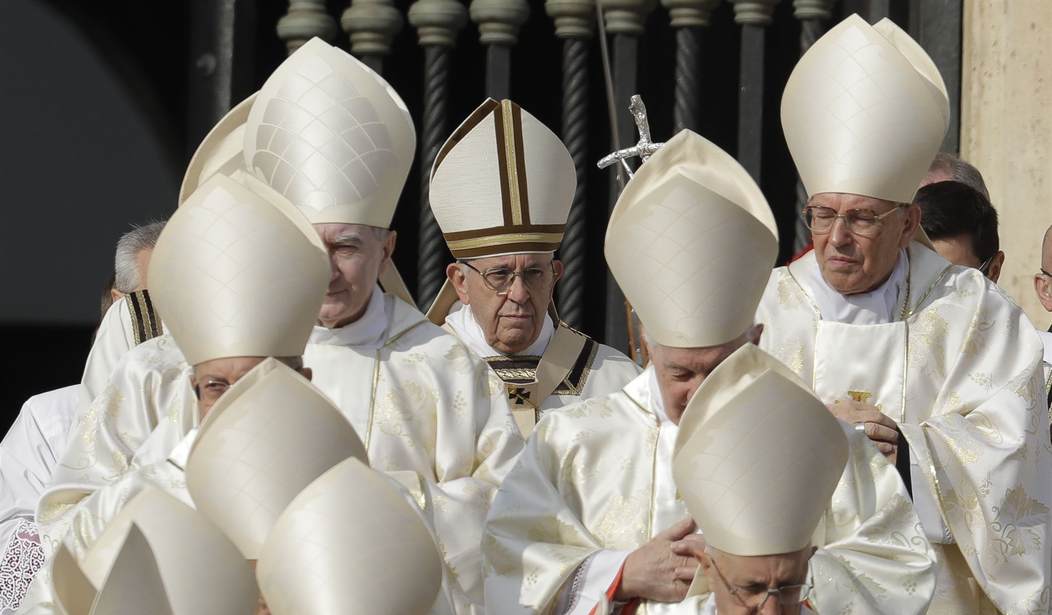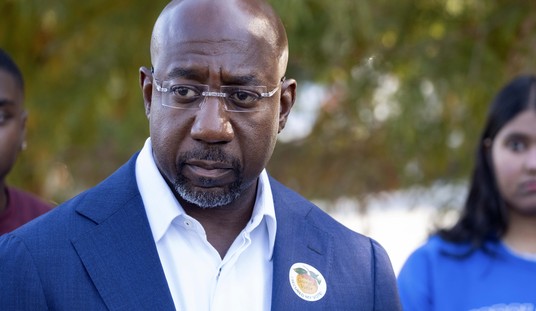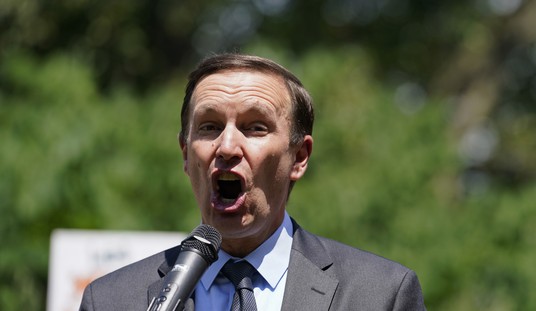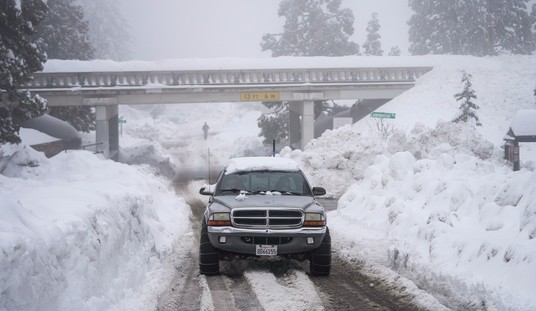A couple of days ago, a conservative Catholic newsletter, The Pillar, published via Substack, scored quite the coup.
Using commercially available information, the reporters claimed that the most powerful priest (that is, not a bishop) in the United States was engaged in an actively homosexual lifestyle.
Monsignor Jeffrey Burrill, former general secretary of the U.S. bishops’ conference, announced his resignation Tuesday, after The Pillar found evidence the priest engaged in serial sexual misconduct, while he held a critical oversight role in the Catholic Church’s response to the recent spate of sexual abuse and misconduct scandals.
“It is with sadness that I inform you that Msgr. Jeffrey Burrill has resigned as General Secretary of the Conference,” Archbishop Jose Gomez wrote July 20 in a memo to U.S. bishops.
“On Monday, we became aware of impending media reports alleging possible improper behavior by Msgr. Burrill. What was shared with us did not include allegations of misconduct with minors. However, in order to avoid becoming a distraction to the operations and ongoing work of the Conference, Monsignor has resigned effective immediately,” Gomez added.
The memo came after the USCCB and Burrill were contacted by The Pillar regarding evidence of a pattern of sexual misconduct on Burrill’s part. Burrill did not respond to questions from The Pillar before his resignation was announced to bishops.
Why is this man the most powerful Catholic priest in America? Because he serves as the general secretary to the US Conference of Catholic Bishops. In that role, much like the chief of staff in a military organization, he helps set the bishops’ agenda and is very influential in guiding the decisions. How good was The Pillar’s reporting? He resigned from his position before the article appeared and has essentially disappeared.
How did it come to pass?
According to commercially available records of app signal data obtained by The Pillar, a mobile device correlated to Burrill emitted app data signals from the location-based hookup app Grindr on a near-daily basis during parts of 2018, 2019, and 2020 — at both his USCCB office and his USCCB-owned residence, as well as during USCCB meetings and events in other cities.
In 2018, the priest was a member of the USCCB’s executive staff and charged with oversight of the conference’s pastoral departments. He and several senior USCCB officials met with Pope Francis Oct. 8, 2018, to discuss how the conference was responding to ecclesiastical scandals related to sexual misconduct, duplicity, and clerical cover-ups.
Burrill, then second-in-command at the conference, is widely reported to have played a central role in coordinating conference and diocesan responses to the scandals, and coordinating between the conference and the Vatican.
Data app signals suggest he was at the same time engaged in serial and illicit sexual activity.
On June 20, 2018, the day the McCarrick revelations became public, the mobile device correlated to Burrill emitted hookup app signals at the USCCB staff residence, and from a street in a residential Washington neighborhood. He traveled to Las Vegas shortly thereafter, data records show.
On June 22, the mobile device correlated to Burrill emitted signals from Entourage, which bills itself as Las Vegas’ “gay bathhouse.”
This caused brain matter to decorate the walls in Jesuit-run facilities and liberal Catholic salons across the nation. The Jesuit magazine, America, which has never met a heresy or abomination it could not fail to condemn, sniveled:
It is difficult to see a scenario in which The Pillar’s report will lead to more transparency and less secrecy. Instead, it is a blueprint for blackmail. And unfortunately, the threat of blackmail is a factor in the coverup of sexual abuse; those who fear their own reputations will be destroyed are far less likely to blow the whistle on someone whose offenses are criminal.
Most Catholics want the church’s sins and corruption to be brought to light, and the Catholic press should play a role in holding the church accountable. But the reporting methods used should be held to the same standards of transparency and truth that we are asking of our leaders.
Steven P. Millies is associate professor of public theology and director of The Bernardin Center at Catholic Theological Union in Chicago, went ballistic in Religion News Service:
I am a sinner. So are you. So is Monsignor Jeffrey Burrill. Not one of us has a personal life that would withstand the sort of scrutiny The Pillar has applied to Burrill. Every single one of us has had a shameful moment we regret, and I suspect most of us must be caught up in cycles of sinfulness that we repeat less because we want to than because we are sinners and cannot help being sinners.
Like anyone else, Burrill’s sins are between him and God. Like any other priest, we can say his bishop belongs in that conversation too. But unless there is some reason to think he has harmed someone else, I feel sure his sins are none of my business, as much as my sins are none of yours. As a Catholic, I am bound to believe all of that.
I am not sure what the investigators at The Pillar believe. I feel comfortably sure that before they embarked on their “investigation,” they must not have thought about the Code of Canon Law, which states, “No one is permitted to harm illegitimately the good reputation which a person possesses nor to injure the right of any person to protect his or her own privacy.”
They must also not have thought about the Catechism of the Catholic Church, which says, “everyone should be careful to interpret insofar as possible his neighbor’s thoughts, words, and deeds in a favorable way” because “detraction and calumny offend against the virtues of justice and charity.” I can see plainly they did not heed St. Paul, who pointed the finger at himself as a sinner (1 Timothy 1:15) before pointing to others.
Whatever we may say of their practice of Catholicism, The Pillar’s investigators paid little heed also to the canons of ethics for journalists. How did they get their story? The Society for Professional Journalists’ Code of Ethics encourages journalists to “avoid using undercover or other surreptitious methods of gathering information” and admonishes that “Pursuit of the news is not a license for … undue intrusiveness.” What story did they get here? That Burrill might have broken his vow of chastity and (consensually) used other people for impersonal sex? The Code of Ethics also tells journalists to “avoid pandering to lurid curiosity, even if others do.” And perhaps more importantly, it says, “avoid stereotyping.” There we also need to pay some attention.
(Note: all of us aren’t priests, pledged to chastity, celibacy, and continence, engaging in buttsex or whatever with anonymous partners. The good professor forgets the part about ravening wolves or knowing people by their works.)
The homosexualist priest, naturally a Jesuit, James Martin had a sad over it all…probably while busily deleting apps from his phone (read the whole thread for one of the most pathetic “kill the messenger” diatribes you’ll ever read).
Regardless of the actions of the priest who was forced to resign today, is there any indication that an actual "investigation" took place? Or did these writers simply buy data from an unscrupulous source, and one possibly breaking the law? One has to ask: "Cui bono?"
— James Martin, SJ (@JamesMartinSJ) July 20, 2021
Just some thoughts on this episode.
The appeal to “journalistic ethics” is utter bullsh**. In 2018, the New York Times and Washington Post shared a Pulitzer Prize for anonymously sourced and largely debunked reporting on Russian interference in the 2016 election that had the express purpose of damaging President Trump’s reputation. What The Pillar did was take legally obtained information (sold by the app developer to marketers) and use it to reveal a major scandal-in-the-making.
From the reaction of those who have been pushing for mainstreaming homosexuality in the Church and society, the reaction…much like that of the Devil to Holy Water…is so over-the-top as to give rise to more questions. How is it possible that this guy was able to habituate the gay-hookup culture and remain anonymous? This guy had a powerful patron among the ranks of the bishops, and some thought should be given to identifying who promoted him to his position of power. The reactions also hint that there is a real fear among predatory homosexual clergy and their sympathizers that more “outings” are in the making.
If there is anything the Church in the US should have learned over the past forty years, it is that allowing actively homosexual men into the priesthood is a recipe for scandal and financial ruin. We’ve burned through most of the cases of priests abusing adolescent boys, and it has cost incalculable damage to the reputation of the Catholic Church as well as billions of dollars siphoned from the pockets of loyal and faithful Catholics to pay the bill. The next phase of the scandal is moving into seminaries where predatory homosexuals prey on seminarians, forcing them to go along or to leave the seminary. According to several reports, these activities are known among seminary staff who are too compromised or fearful to object. Reading this part of his bio, any sane person in authority would have investigators at his previous assignments to see what there was to see:
Prior to his USCCB appointment, Msgr. Burrill was pastor of St. Bronislava Church in Plover in central Wisconsin for three years. He was at the Pontifical North American College in Rome from 2009 to 2013, serving originally as director of apostolic formation and subsequently as the Carl J. Peter chair of homiletics, formation adviser and director of media relations.
He was ordained in 1998 for the Diocese of La Crosse. He was pastor of the parishes of St. Mary, in Duran, Holy Rosary in Lima, and Sacred of Jesus in Mondovi, Wisconsin, from 2001 to 2009. He also taught and was chaplain at Regis High School and Middle School in Eau Claire, Wisconsin, for two years prior to his parish assignments.
In addition, he was a regional vicar for six years, served two terms on the diocesan priests’ council and also was the diocese’s ecumenical officer and a member of the seminary admissions board.
I’ll bet good money on what you find. I don’t think it is any accident that about two-thirds of the article in The Pillar focuses upon the danger that predatory homosexual priests represent to adolescents and seminarians. I think it is a “look there!” bonfire.
I’m not an authority, or hardly conversant, on how customer information is shared from app developers to marketers, but it seems to me that there is more here than we are being told. While the data collection and analysis are completely above board, the question is how Burrill was identified as a target. I don’t believe it was happenstance. My guess is that he was chosen as a target by someone, and The Pillar was coached through the process of “finding” him in the data. While there is always the chance that there was some twisted gay romantic angle at work here, the safe bet is that Burrill was picked as a target by a person or persons who have tired of the coddling and protection afforded to hypocrites like Burrill by some members of the Church hierarchy.
Bottom line, if you don’t want to be outed as using a gay hookup app (or an app to arrange adulterous liaisons, like Ashley Madison), then don’t use one. It is really that simple. If you are a priest who has pledged himself to a life of chastity, keep your vows or resign from the priesthood. The real scandal is that this man was promoted and groomed (can I say that) for promotion when his habits were probably known to a non-trivial number of senior prelates, not that he was caught or the method used to reveal him for what he is.
The Pillar contacted the Newark archdiocese after a review of commercially available app signal data showed patterns of location-based hookup app use at more than 10 archdiocesan rectories and clerical residences during 2018, 2019, and 2020. There are 212 parishes in the Newark archdiocese.
The analysis of commercially available signal data obtained by The Pillar, which was legally obtained and whose authenticity The Pillar confirmed, shows evidence that both homosexual and heterosexual hookup apps were used in parish rectories or other clerical residences with a frequency suggesting, in several cases, residence in those locations.
While it does not identify the names, addresses, or telephone numbers of particular users, data collected, commodified, and sold by hookup apps with the consent of users can include the usage location of particular devices at particular times.
Without compelling public interest regarding individual priests serving in archdiocesan ministries, The Pillar did not undertake to de-anonymize data about parish rectory app usage.













Join the conversation as a VIP Member